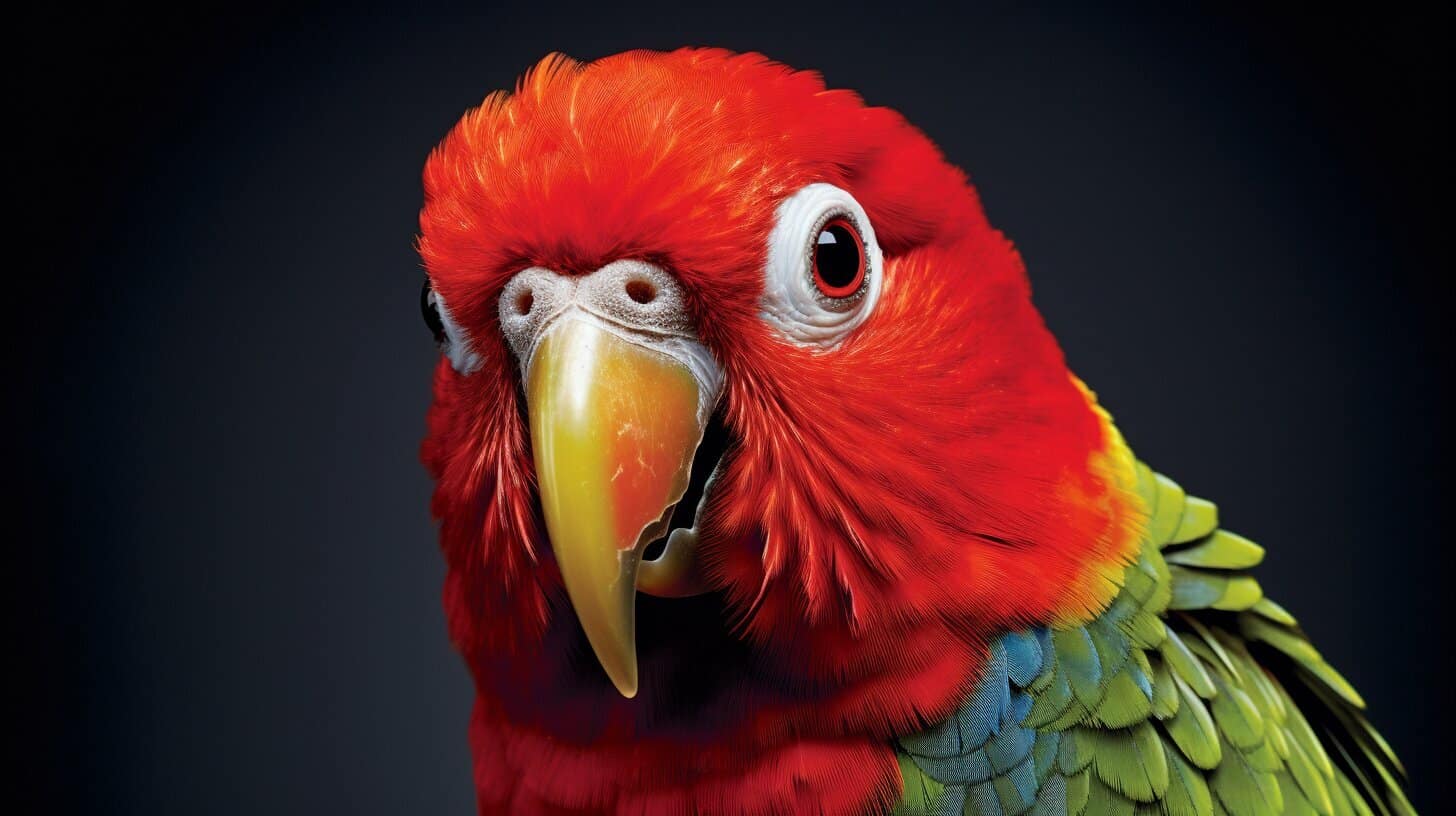Kakariki birds are a beloved species of birds that are known for their colourful appearance and lively personalities. However, one aspect that often surprises new bird owners is the volume at which these birds can vocalize. You’ve come to the right place if you’re curious about how loud a kakariki can be.
In this section, we’ll explore the volume characteristics of kakariki birds and answer the question of how loud is a Kakariki.
Key Takeaways:
- Kakariki birds are known for their distinctive vocalizations.
- Their volume can vary depending on the type of sound they are producing
- Understanding the decibel level of kakariki noises can help you better appreciate their auditory impact
Understanding Kakariki Vocalization
Kakariki birds are known for their unique and distinct vocalizations, making them a fascinating species to observe. These birds have a range of sounds that they use to communicate, including chirping, screeching, and screaming.
Exploring Kakariki Sounds
One of the most common sounds kakariki birds produce is their chirping. This is a melodious and pleasant sound that bird owners often enjoy hearing. The volume of the chirping sound can vary, but it is generally not loud enough to cause disturbance.
The screech is another sound that kakariki birds produce, which can be much louder and more intense than their chirping. The screeching sound is typically used to signal distress or alarm, which can be quite startling.
Kakariki birds may sometimes scream, producing a loud and piercing sound. Screaming is usually reserved for when they are in extreme distress or danger and can be a sign that something is wrong.
The Intensity of Kakariki Calls
Regarding intensity, kakariki calls can range from soft and gentle to loud and forceful. Chirping sounds are typically on the softer end of the spectrum while screeching and screaming can be much louder and more jarring.
It’s important to note that intensity can also vary depending on the individual bird. Some kakariki birds may be naturally louder or softer than others, so it’s important to get to know your bird and their unique vocalization patterns.
Why Do Kakariki Birds Vocalize?
Kakariki birds vocalize for various reasons, including communication, attracting a mate, and expressing emotion. Chirping, for example, is often a sign of contentment and happiness, while screeching and screaming can indicate distress or fear.
By understanding why kakariki birds vocalize and what their sounds mean, you can better interpret their behaviour and ensure they are happy and healthy.
Decibel Level of Kakariki Noises
Decibels (dB) are the unit of measurement used when measuring the volume of sound. The decibel scale for sounds ranges from 0 dB, the quietest sound a human ear can detect, to 194 dB, the loudest sound possible that can cause physical pain and possibly even permanent hearing loss.
So, where do kakariki birds fall on this scale? According to research, the average volume of a kakariki’s vocalizations is around 70 dB. To put that into perspective, a typical conversation between two people is usually around 60 dB, while a vacuum cleaner can reach 80 dB.
It’s worth noting that the volume of a kakariki’s vocalizations can vary depending on the time of day, their environment, and their mood. While they may not be as loud as other birds, it’s still important to consider their noise level when keeping kakariki birds as pets.
The Screech Sound of Kakariki
Kakariki birds are known for their distinctive screeching sound, which can often be loud. This high-pitched noise is typically a warning call, often when the bird feels threatened or senses danger.
The volume of the screech sound can vary depending on the situation. When a kakariki bird is agitated or alarmed, its screech may be more intense and piercing. However, when the bird is simply communicating with others or expressing excitement, its screech may be more moderate in volume.
It’s important to note that while the screeching sound can be quite loud, it’s also a natural behaviour for kakariki birds. In the wild, these birds use their vocalizations to communicate with other birds in their flock and to establish their territory.
For those concerned about the volume of their kakariki’s screeching, some strategies can help minimize excessive noise. Providing your bird with plenty of toys and activities can help to keep it occupied and reduce the likelihood of it becoming bored or agitated. Additionally, covering the bird’s cage at night or when it may become overstimulated can help reduce its vocalizations.
Tip: Remember that screeching is a natural behavior for kakariki birds, and it’s important to provide them with an environment that allows them to express this behavior while also minimizing excessive noise.
The Chirping Sound of Kakariki
Kakariki birds are known for their unique and melodious chirping sound. Their chirps can range from soft and gentle to loud and assertive, depending on their mood and environment. These sounds are important in the bird’s communication and social behaviour.
The volume of the chirping sound can vary based on several factors, such as the bird’s age, gender, and environment. Young kakariki birds tend to chirp more frequently and at a higher volume than adult birds, while male birds may be more vocal than female birds.
Additionally, the environment in which the bird is kept can impact the volume of their chirping. If the bird is kept in a quiet or secluded area, it may chirp less frequently and at a lower volume. However, if the bird is kept in a noisy environment or with other birds, it may need to increase the volume of their chirps to be heard.
Overall, the chirping sound of a kakariki bird is a natural and important aspect of their behaviour. By understanding the volume characteristics of their chirping, bird owners can better appreciate their bird’s communication and social interactions.
Understanding Kakariki Screams
Kakariki birds are known to emit screams that can be quite intense. These screams are a natural part of their vocalizations and can occur for various reasons.
The volume of kakariki screams can vary depending on the individual bird and the situation. The intensity of their screams can be influenced by stress, fear, or excitement.
Why do Kakariki Birds Scream?
Kakariki birds may scream when they feel threatened or perceive danger in their environment. Screaming can also occur when they are excited, playing, or communicating with other birds. In some cases, screaming can be a way for them to express discomfort or request attention.
It’s essential to note that screaming is a natural behaviour for kakariki birds and does not necessarily indicate an underlying problem or distress.
The Volume of Kakariki Screams
The volume of kakariki screams can range from moderate to extremely loud. On average, kakariki screams can reach up to 100 decibels when measured up close.
It’s important to remember that volume perception can be subjective and depends on various factors, such as distance and surrounding noise levels.
If you find that your kakariki bird’s screams are particularly loud or frequent, there are several strategies that you can implement to help reduce their vocalizations. These include providing more toys and activities to keep them occupied, ensuring a comfortable and stimulating environment, and providing positive reinforcement for quieter behaviour.
It’s important to remember that kakariki birds are social animals and require appropriate socialization and stimulation. Restricting their vocalizations excessively may lead to stress and other behavioural issues. As such, finding a balance that works for you and your bird is important.
Other Factors Affecting Kakariki Noise
While volume is a critical factor in assessing the noise level of kakariki birds, it’s not the only aspect to consider. Various elements may influence kakariki noise, including:
- Time of day: Like most birds, kakariki is most vocal in the morning and evening. During the day, they tend to be quieter and more relaxed.
- Mating season: During breeding, kakariki birds may become more vocal, especially when trying to attract a mate or defend their territory.
- Environmental stimuli: Changes in the surrounding environment, such as loud noises or bright lights, may prompt kakariki to vocalize more frequently or at higher volumes.
- Stress or boredom: If kakariki birds are stressed or bored, they may become louder and more agitated. Providing adequate mental stimulation and physical activity can help address this issue.
Knowing these factors, bird owners can better anticipate and manage kakariki noise levels, creating a more peaceful and enjoyable environment.
Mitigating Kakariki Noise
If you’re concerned about the noise level of your kakariki bird, there are several strategies you can implement to reduce their vocalizations without compromising their well-being.
Provide Adequate Space
Kakariki birds are active and energetic creatures that require ample space to fly and play. When birds feel cramped or confined, they may become agitated and vocalize more frequently. It’s essential to ensure that your kakariki’s living environment is spacious and allows them to move around comfortably.
Establish a Consistent Routine
Birds thrive on routine, and establishing a consistent daily schedule can help reduce stress and excessive vocalization. Keep your kakariki on a regular feeding, sleeping, and playtime schedule to create a sense of structure and familiarity.
Provide Mental Stimulation
Kakariki birds are intelligent creatures that require mental stimulation to stay healthy and entertained. Providing your bird with plenty of toys, puzzles, and interactive activities can help keep them occupied and reduce the need for excessive vocalizations.
Reduce Outside Stimuli
Excessive outside stimuli, such as loud music or frequent visitors, can trigger your kakariki to vocalize more than usual. Try to limit exposure to these stimulating factors, particularly when you need your bird to rest or remain calm.
Consult with a Bird Expert
If you’re still struggling with excessive kakariki noise, consulting with a bird behaviour expert may be helpful. They can help assess your bird’s living environment, routine, and mental stimulation to identify potential triggers for vocalization. They can also guide training and behaviour modification techniques to help reduce excessive vocalizations.
Conclusion
In conclusion, kakariki birds have various vocalizations, each with varying volume levels. By understanding their natural behaviours and sounds, bird owners can appreciate their feathered companions even more.
However, excessive noise can become a concern for some bird owners. When mitigating their vocalisations, it’s important to consider environmental conditions and the bird’s overall well-being.
Implementing strategies such as soundproofing the bird’s living area, providing toys for mental stimulation, and engaging with your bird can help minimize excessive noise without compromising their health or happiness.
Final Thoughts
Overall, kakariki birds are remarkable creatures with unique and intriguing sounds. They can make wonderful companions for bird lovers with proper care and attention.
FAQ
Q: How loud is a kakariki?
A: Kakariki birds can vary in noise levels but generally produce medium to high-volume sounds.
Q: What is the volume of kakariki vocalizations?
A: Kakariki birds have various vocalizations, including chirping, screeching, and occasional screams. These sounds can be quite intense, especially when the bird is excited or attempting to communicate.
Q: Do kakariki birds produce loud screech sounds?
A: Yes, kakariki birds are known for their screech sounds. These sounds can be loud and piercing, especially when the bird is alarmed or seeking attention.
Q: How loud is the chirping sound of a kakariki?
A: Kakariki birds have a melodious chirping sound that can vary in volume. While not as loud as their screech sounds, the chirping can still be audible, especially when the bird is playful or content.
Q: Do kakariki birds scream loudly?
A: Kakariki birds can emit loud screams, especially during mating season or when they feel threatened. These screams can be intense and may require some understanding from bird owners.
Q: Can other factors affect the noise level of kakariki birds?
A: Apart from the bird’s natural vocalizations, other factors can contribute to the overall noise level. This includes environmental conditions, interaction with other birds or animals, and the bird’s overall health and well-being.
Q: How can I mitigate the noise level of my kakariki bird?
A: If you’re concerned about the noise level of your kakariki bird, you can implement some strategies. These include providing adequate mental and physical stimulation, creating a quiet and comfortable environment for the bird, and seeking professional advice.
Q: What is the conclusion regarding Kakariki noise level?
A: In conclusion, kakariki birds have a range of vocalizations with varying intensities. Understanding their volume characteristics can help bird owners better appreciate their natural behaviours. You can create a harmonious environment for your kakariki and yourself by implementing strategies to mitigate excessive noise.
You may also find our article what do Kakariki noises mean? worth reading



Have comments or questions about this article? Then get involved!
Spotted an error or something we have missed? Let us know